Emerging AI Trends That Will Impact PHP Full Stack Development Companies in 2024
Over time, AI’s role in PHP Full Stack development company in bangalore has evolved from a mere experimental technology to a core element of development strategies. Initially, AI was used for basic data processing tasks. However, now it’s driving sophisticated web and app development processes. This evolution signifies a transformative period for PHP development companies, enabling them to leverage AI for complex problem-solving, creating more intuitive and intelligent applications. As AI tools and frameworks become more accessible and integrated into PHP development environments, developers can harness advanced technologies to deliver novel solutions that were once deemed impractical.
One of the most impactful AI trends in PHP development is in the realm of cybersecurity. AI-driven security systems are becoming increasingly adept at identifying and neutralizing threats in real-time. By analyzing patterns and predicting potential breaches, AI algorithms offer a level of dynamism and proactive security management that traditional methods cannot match. For PHP full stack development companies, incorporating these AI security systems means safeguarding their applications and user data more effectively, thus building trust and reliability in the digital products they offer.

Streamlining Development Processes with AI-Driven Tools
AI-driven tools are revolutionizing how developers approach their projects, making the development process more efficient and less error-prone. From automatic code generation to intelligent debugging tools, AI helps in identifying challenges early in the development cycle, saving time and resources. These tools also facilitate better collaboration among team members by offering insights that are easily interpretable and actionable. This streamlined approach not only accelerates the time to market but also ensures that the end product is of superior quality.
Automation has always been a game-changer in various industries, and it’s no different in PHP Full stack development. AI is being used to automate mundane and repetitive tasks such as setting up development environments, writing standard code, and testing. This not only frees up developers’ time to focus on more complex and creative aspects of development but also minimizes human error, leading to cleaner, more efficient code production. As AI technology matures, we can expect even more sophisticated automation solutions that further optimize the development lifecycle.
Personalization and User Experience Optimization through AI
AI is playing a pivotal role in transforming how users interact with PHP-based applications. By analyzing user data, AI algorithms can tailor content, recommendations, and interfaces to individual preferences, creating a highly personalized user experience. This kind of customization not only enhances user engagement but also improves satisfaction and loyalty, offering PHP development companies a competitive edge.
Predictive Analytics and Its Role in PHP Full Stack Development
Predictive analytics is another AI innovation that’s making waves in PHP development. By leveraging data, statistical algorithms, and machine learning techniques, PHP applications can now predict outcomes with a high degree of accuracy. This capability is particularly beneficial in areas like E-commerce, where understanding consumer behavior can significantly impact sales strategies. For PHP developers, incorporating predictive analytics means their applications can offer more value to their users, providing insights and making recommendations that are both timely and relevant.
In conclusion, as we look towards 2024, it’s clear that AI trends will play a crucial role in shaping the future of PHP full stack development companies. From enhancing security measures to automating routine tasks and personalizing user experiences, the integration of AI is set to elevate the capabilities and efficiencies of PHP development to unprecedented levels.
Overcoming Challenges in Adopting AI in PHP Development Companies
Adopting Artificial Intelligence (AI) into PHP development practices is paving the way for innovation. However, it’s not without its share of hurdles. As we peer into 2024, understanding these challenges and preparing for them can set the stage for seamless integration of AI in PHP full-stack development companies. Let’s unravel some of the key obstacles and ways to address them.
Skill Gap and Training Needs for AI Integration
One prominent challenge is the skill gap existing within teams. AI and machine learning (ML) demand a specific set of skills that differs markedly from traditional PHP development expertise. Bridging this gap requires targeted training and skill development initiatives. Companies must invest in continuous learning programs, workshops, and courses that are specific to AI and ML. Encouraging participation in open-source projects and offering incentives for gaining certifications in AI/ML can also bolster a team’s capabilities. Remember, fostering a culture of learning keeps your company agile and prepared for the technological shifts AI brings to the table.
Ethical and Privacy Concerns in AI-Powered Solutions
As AI systems learn and evolve from the data fed to them, ethical and privacy concerns naturally bubble up. The fear of inadvertently creating biased algorithms or violating user privacy is real. To navigate this, PHP development companies must incorporate ethical AI practices from the ground up. This includes setting up clear guidelines for data usage, ensuring transparency around how AI models make decisions, and regularly auditing AI systems for biases or ethical lapses. Integrating privacy-by-design principles in the development process can help in safeguarding user data and bolstering trust in AI-powered solutions.
Balancing Cost-Efficiency and Efficiency in AI Implementation
The initial investment in AI technologies can be steep, raising concerns about cost-efficiency. Moreover, striking the right balance between investing in AI and ensuring it brings measurable efficiency gains is crucial. Cost concerns can be mitigated by adopting a phased approach to AI integration. Starting with small, pilot projects can help in understanding the potential ROI of AI functionalities before a full-scale roll-out. Additionally, leveraging cloud-based AI services can reduce upfront hardware costs and offer scalable solutions as the need grows. Prioritizing AI use cases that offer quick wins in terms of efficiency can also justify the investment and pave the way for more ambitious AI projects.
Future Prospects: AI-Driven PHP Full Stack Development
Looking ahead, the integration of AI into PHP full-stack development heralds an exciting era of enhanced capabilities, from smart coding tools to sophisticated data analysis and personalized user experiences. Here are some of the prospects that AI promises to bring to the PHP development arena.
The future of PHP full stack development, powered by AI, sees a horizon where development processes are not just optimized but fundamentally transformed. Imagine smart editors and development environments that can predict developers’ needs, suggest optimizations in real-time, and automate mundane tasks. This not only boosts productivity but also allows developers to focus on creative aspects of coding.
Further, AI can revolutionize how user data is utilized, enabling PHP developers to craft highly personalized user experiences. Through sophisticated analysis of user behavior, AI algorithms can tailor content, recommendations, and interfaces to individual users, significantly improving user satisfaction and engagement.
Moreover, predictive analytics powered by AI can provide PHP developers with insights into potential system failures, security threats, and performance issues before they become critical. This proactive approach to maintenance and security not only enhances the reliability of PHP-based solutions but also reduces downtime and maintenance costs.
The integration of AI into PHP full-stack development is also set to redefine e-commerce platforms, customer service portals, and content management systems by making them smarter and more adaptable to user needs. From automated customer support bots that provide instantaneous service to dynamic pricing models that adapt to market trends, the possibilities are endless.
In essence, the future of PHP full-stack development, intertwined with AI capabilities, is ripe with opportunities for innovation, efficiency, and enhanced customer satisfaction. As companies navigate the challenges of integrating AI, the focus should remain on leveraging these advanced technologies to unlock their full potential, ensuring that they remain at the forefront of digital transformation in 2024 and beyond.
The Impact of AI and Machine Learning on Web Development Services.
Today, the digital landscape is evolving more rapidly than ever, thanks to the groundbreaking advancements in Artificial Intelligence (AI) and Machine Learning (ML). These technologies are not just buzzwords; they are reshaping the very fabric of how websites are designed, developed, and operated. Imagine a world where your website can learn from visitor interactions, optimize itself for better user experience, and even solve problems on its own. This isn’t a glimpse into the far future; it’s happening right now. Through automation, sophisticated data analysis, and innovative problem-solving approaches, AI and ML are setting new standards in the web development services in bangalore .

The Role of AI in Web Development
The integration of Artificial Intelligence (AI) into web development marks a remarkable evolution in how websites are designed, developed, and maintained. The infusion of AI technologies reshapes the landscape of web development services, making processes more efficient, innovative, and user-friendly.
AI, in the context of web development, refers to the simulation of human intelligence processes by machines, especially computer systems. These processes include learning (the acquisition of information and rules for using the information), reasoning (using rules to reach approximate or definite conclusions), and self-correction. In web development, AI is primarily used to automate repetitive tasks, analyze data more efficiently, and improve user experiences on websites. It opens up new avenues for developers and businesses to create more dynamic and responsive websites that cater to the ever-evolving needs of users.
Benefits of AI in Enhancing Web Development Services
The adoption of AI in web development brings several tangible benefits:
– Automation of Tedious Tasks: AI automates tasks such as coding, which can significantly reduce development time and allow developers to focus on more complex issues.
– Enhanced User Experience: Through AI’s data analysis capabilities, websites can offer personalized experiences to users, improving engagement and satisfaction.
– Better SEO Performance: AI-driven websites can better understand and optimize for search engine algorithms, leading to improved visibility and organic traffic.
– Error Reduction: AI systems can spot and rectify errors more efficiently than humans, leading to more stable and reliable websites.
Machine Learning Applications in Web Development
Machine learning (ML), a subset of AI, focuses on building systems that learn from data, identify patterns, and make decisions with minimal human intervention. Its application in web development is transforming the way websites learn from their users and adapt to their needs.
Overview of Machine Learning Algorithms in Web Development
Several machine learning algorithms find application in web development, each serving different purposes:
– Regression Algorithms: Used for predicting a continuous value. For example, predicting the future traffic of a website.
– Classification Algorithms: Helpful in categorizing data into different classes. For instance, sorting customer feedback into positive, negative, and neutral.
– Clustering Algorithms: Used to identify groups with similar characteristics without prior knowledge of those groups. It’s useful for segmenting website visitors based on their browsing behavior.
– Decision Trees: These models are used for making predictions or decisions based on specific queries by walking through a tree of questions and following the path based on answers.
Future Trends of Machine Learning in Web Development

As we move forward, the role of machine learning in web development company in bangalore is set to become even more significant:
– Predictive User Interfaces: Websites will become more anticipatory, offering information and services based on users’ predicted needs.
– Voice Search Optimization: With the rise of virtual assistants, optimizing websites for voice search will become crucial.
– Automated Quality Assurance: Machine learning algorithms will increasingly be used to automate the testing of websites, ensuring they meet quality standards and deliver optimal user experiences.
– Adaptive Security Measures: Security systems powered by ML will become more adept at identifying and countering cyber threats in real-time.
The fusion of AI and machine learning with web development not only streamlines the development process but also opens up new possibilities for creating more dynamic, intelligent, and user-centric websites. As technology continues to advance, the symbiosis between web development and AI/ML will undoubtedly deepen, reshaping the digital landscape in ways we are just beginning to understand.
Automation in Web Development through AI
The introduction of Artificial Intelligence (AI) into the world of web development has revolutionized the way developers create and maintain websites. By integrating cutting-edge technologies, developers can now automate many aspects of the web development process, which used to be manually intensive and time-consuming.
Automating Repetitive Tasks with AI
One of the most significant benefits of AI in web development is its capacity to handle repetitive tasks. This includes code generation, testing, and even bug fixes. AI algorithms can learn from patterns and mistakes, making them incredibly efficient at auto-correcting and generating code. This not only saves time but also reduces the chances of human error, ensuring a higher quality of work. For instance, AI tools can automatically adjust HTML and CSS code to ensure compatibility across different browsers, thereby streamlining the development process considerably.
Improving Efficiency and Speed in Web Development through Automation
The implementation of automation through AI doesn’t just stop at completing mundane tasks. It also drastically enhances the overall efficiency and speed of the web development process. Automation tools powered by AI can analyze project requirements and suggest the most effective development frameworks and libraries, essentially acting as a co-pilot during the development journey. This allows developers to focus on more complex and creative aspects of web development, ensuring that projects are not only completed faster but also with improved functionality and aesthetics.
Data Analysis in Web Development with Machine Learning
Machine Learning (ML), a subset of AI, plays a crucial role in the analysis of data within web development. The ability to analyze and learn from data enables machines to deliver insights and perform tasks that were previously unattainable, drastically impacting the way developers approach web projects.
Leveraging Data Analysis for Enhanced User Experience
Utilizing machine learning algorithms, developers can sift through vast amounts of user data to identify trends and behaviors. This information is invaluable for creating user-centric web designs and functionalities. For instance, by understanding how users interact with various elements of a website, developers can optimize navigation, load times, and content placement. Furthermore, ML can assist in personalizing user experiences, showing content that is most relevant to the individual’s preferences and past behaviors. This level of customization not only improves user satisfaction but also increases engagement and conversion rates.
The Future Outlook for Web Development company in bangalore in the Era of AI and ML
As we look ahead, the role of AI and machine learning in web development is expected to grow even more prominent. We’re likely to see these technologies advance to the point where they can predict user needs and preferences, enabling developers to create proactive web experiences. With the advent of AI-powered design and development tools, we can also anticipate the democratization of web development, making it accessible to people without traditional coding skills. Additionally, as data privacy becomes a paramount concern, AI and machine learning will play key roles in ensuring websites are not only user-friendly but also secure. In essence, the future of web development in the era of AI and ML is bright, filled with possibilities for innovation and enhanced user experiences.
The Cost of Building a Shopify Store: Budget Planning for Entrepreneurs
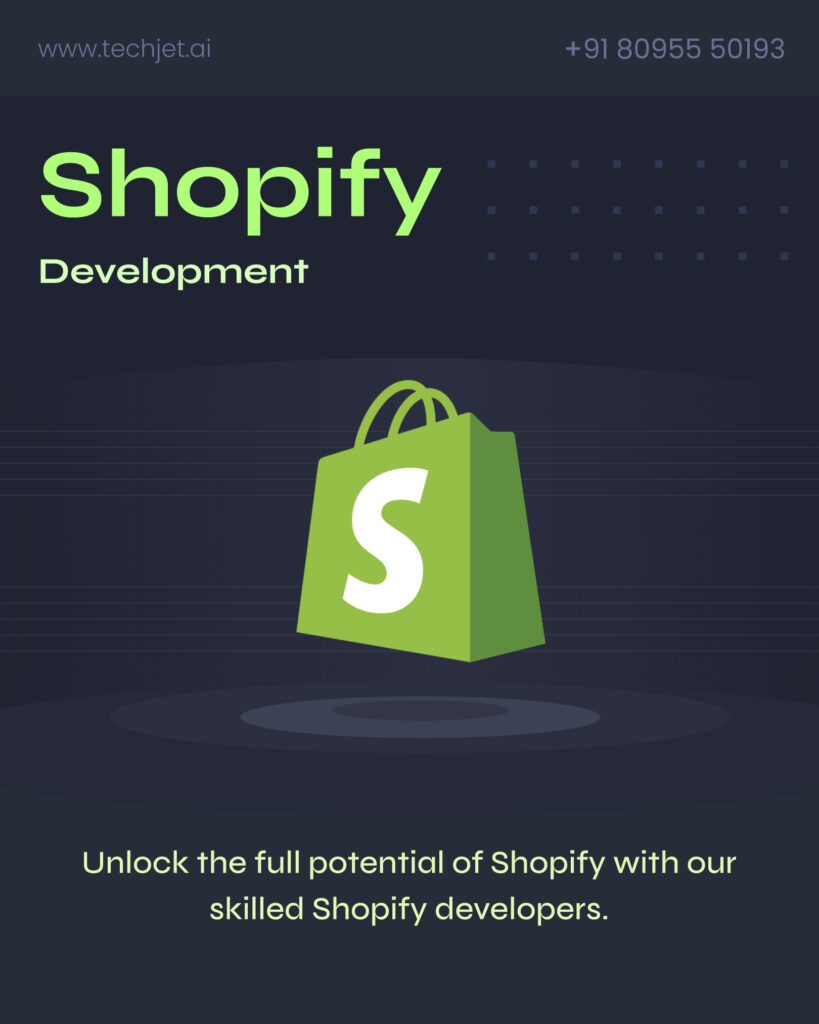
Diving into the world of e-commerce can be both exciting and daunting, especially for entrepreneurs looking to make their mark. One of the most popular platforms for launching an online store is Shopify, known for its user-friendly interface and wide array of features. But, before you jump in, it’s crucial to understand the costs involved in setting up and running a Shopify store. Budget planning is an essential step for any entrepreneur eager to embark on this journey, ensuring that you’re not caught off guard by unexpected expenses. Whether you’re about to launch your first product or looking to expand your online presence, understanding the financial commitment required can help set the stage for success. From subscription plans to marketing and beyond, we’ll guide you through the key costs to consider, helping you lay a solid foundation for your e-commerce venture.
Building a Shopify store might seem straightforward, but the cost involved can vary widely depending on several key factors. If you’re an entrepreneur eager to dive into the e-commerce world, understanding these variables is crucial for budget planning. Let’s explore what these factors are.
Shopify Subscription Plans
One of the first considerations when starting your Shopify journey are the subscription plans. Shopify offers several tiers, including Shopify Basic, Shopify, and Advanced Shopify, each with its own set of features and pricing. Basic Shopify is great for those starting out, offering all the essential features at a lower cost. As your store grows, moving up to Shopify or Advanced Shopify development can provide more sophisticated tools for analytics and reporting, better shipping rates, and lower credit card fees. Remember, choosing the right plan should align with your business size, sales volume, and future growth plans.
Customization and Themes
Customization is where you can truly make your store shine, but it’s also where costs can start to add up. Shopify provides a plethora of free and paid themes. While free themes are great for getting started, paid themes offer more customization options and unique designs, which can enhance your brand’s presence online. Beyond themes, custom development work, such as tweaking the code to add new features or changing the layout, requires hiring a developer. The cost here depends on the complexity of the work and the developer’s rates.
Essential Features and Add-Ons for a Successful Shopify Store
To ensure your Shopify store not only attracts customers but also provides a seamless shopping experience, incorporating the right features and add-ons is key. While Shopify offers a robust platform out of the box, these additional tools can significantly boost your store’s functionality and, ultimately, its success.
Payment Gateways
Offering your customers a wide range of payment options can vastly improve their shopping experience. Shopify supports numerous payment gateways, including Shopify Payments, PayPal, and third-party providers. While Shopify Payments is a convenient option with no additional transaction fees, utilizing third-party gateways can incur additional fees. However, offering multiple payment options caters to a broader customer base, potentially increasing sales.
Marketing Tools
In the digital age, the right marketing tools can make a big difference in drawing traffic to your store and converting visits into sales. Shopify’s app marketplace offers a plethora of marketing tools, from email marketing to social media integration and SEO. While many basic tools are available for free or at a low cost, more advanced or specialized tools might require a subscription fee. Investing in marketing tools is essential for growing your customer base and driving sales.
Shipping Integration
Efficient and reliable shipping is crucial for any e-commerce store. Shopify offers built-in tools for shipping calculations and label printing, but integrating with external shipping carriers or fulfillment services can enhance your shipping capabilities. Third-party apps can provide real-time shipping rates, bulk shipping label printing, and automated tracking updates to customers. While some apps offer free plans, more comprehensive solutions may require a monthly subscription. Selecting the right shipping integration can improve operational efficiency and customer satisfaction.
Understanding these factors and features will help you better plan the budget for your Shopify store, ensuring not just a successful launch, but also a profitable operation in the long run.
Hidden Costs to Consider When Building a Shopify Store
When venturing into the exciting world of e-commerce with Shopify, entrepreneurs often budget for the obvious expenses: subscription plans, domain name, and initial setup fees. However, there are hidden costs that, if not accounted for, can surprise you down the line. Understanding these can help you better plan your finances and avoid any unexpected shocks.
App Development Costs
Apps are essential for enhancing the functionality of your Shopify store, offering everything from SEO tools to customer review integrations. While Shopify provides a variety of free apps, many of the most powerful and versatile apps come with a cost, either as a one-time purchase or a monthly subscription. These costs can quickly add up, especially if you’re aiming to provide a high level of functionality and customer experience. Consider which apps are truly necessary for your store and budget for them accordingly. It’s also wise to regularly review your app subscriptions to ensure they’re still serving your needs and worth the investment.
Maintenance and Updates
Running a Shopify store isn’t just about setting it up and watching it go; regular maintenance and updates are crucial for security, efficiency, and user experience. While Shopify itself is relatively easy to maintain compared to other e-commerce platforms, any customizations or third-party apps may require updates or fixes over time. These tasks might sometimes require a professional’s help, adding to your costs. Budgeting for maintenance and updates ensures your store remains in top shape, providing a smooth experience for your customers and safeguarding your revenue.
Tips for Budget Planning for Entrepreneurs Building a Shopify Store
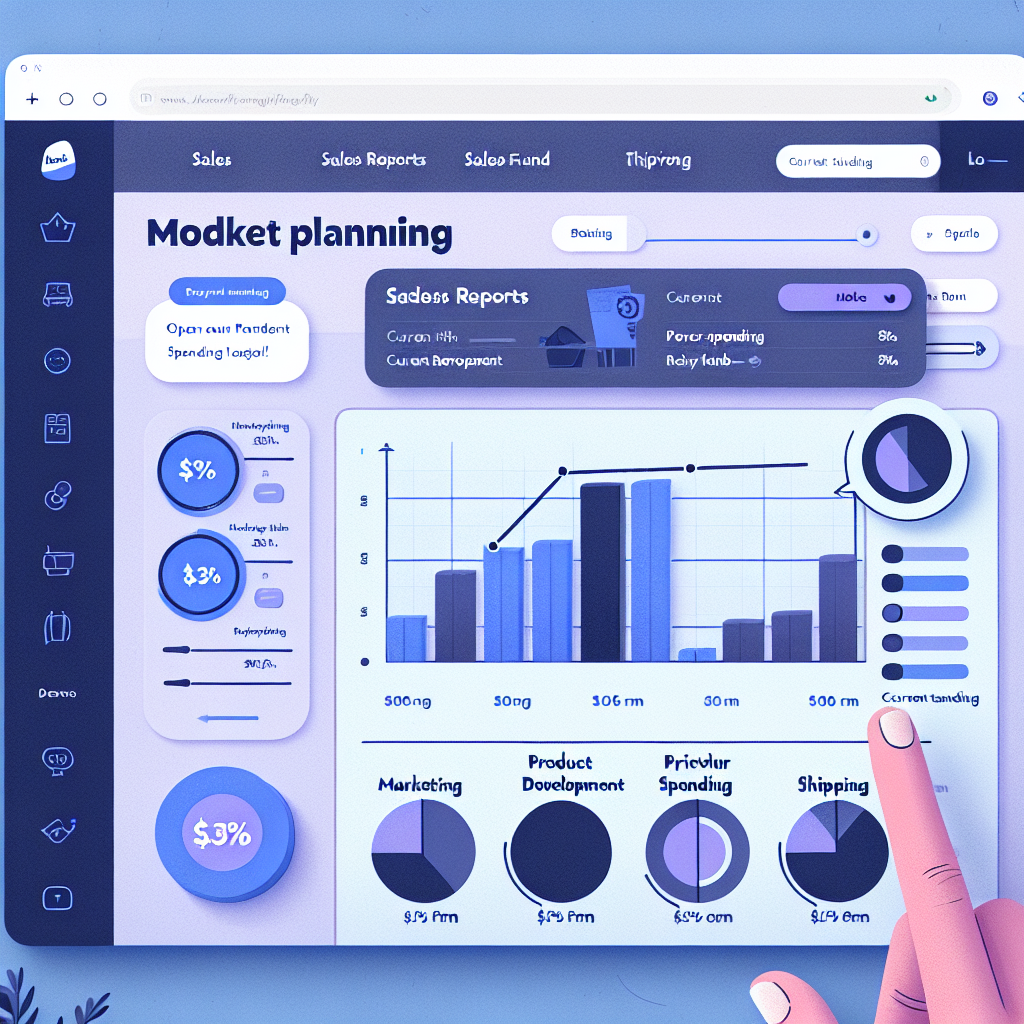
Careful budget planning is key to the successful launch and growth of your Shopify store. It ensures you can cover all necessary costs without depleting your resources, allowing you to focus on growing your business. Here are some actionable tips to help you plan your budget smartly.
Set Clear Goals and Prioritize
Begin with clear, achievable goals for your Shopify store. Knowing what you aim to accomplish (e.g., sales targets, customer reach) helps in identifying the essential features and tools you need to invest in. Prioritize these investments based on their potential impact on your goals. This might mean spending more on high-quality product images and less on a vast array of apps at the start. Remember, you can always scale and add more features as your store grows.
Research Discounts and Offers
Don’t overlook the potential savings from discounts and offers. Shopify and many app developers regularly offer deals, especially to new or upgrading users. Keep an eye out for these opportunities and plan your purchases around them. Joining Shopify forums and communities can also alert you to the latest deals and cost-saving strategies shared by experienced store owners.
Consider Long-Term Costs
While focusing on the initial setup costs is important, don’t forget to plan for the long-term. This includes ongoing subscription fees, maintenance costs, marketing and advertising, and scaling up your store. Anticipate how these expenses might grow as your business expands. By planning for these long-term costs, you can ensure that your store remains financially viable and can continue to grow without hitting unexpected financial roadblocks.
By being mindful of the hidden costs and applying strategic budget planning, you can set your Shopify store on a path to success. Remember, a well-planned budget is not just about cutting costs; it’s about making smart investments that drive your business forward.
Embarking on the entrepreneurial journey of setting up a Shopify store is both exciting and daunting. The key to not let expenses spiral out of control is in diligent budget planning. Remember, the cost doesn’t stop at just setting up the store. Consider factors like hosting, design, development, marketing, and ongoing maintenance. By understanding these expenses upfront, you can make informed decisions that align with your business objectives and financial capabilities.
Don’t let the fear of costs deter you from starting your e-commerce venture. With strategic planning, resourcefulness, and a focus on scalability, you can set up a Shopify store that not only meets your budget but also paves the way for your business’s success. Keep in mind, investing in your business is investing in your future. So take that step, plan wisely, and watch your e-commerce dream turn into reality.
The Evolution of PHP in Full Stack Development
PHP – the trusty old scripting language that has powered countless websites and applications across the internet. If you’ve been around the block in the world of web development, chances are, you’ve crossed paths with PHP at some point. But as we move further into the digital age, you might wonder how PHP fits into the modern tapestry of full stack development. Fear not, fellow tech enthusiast! We’re here to dive into the evolution of PHP in full stack development, exploring the latest trends and making some educated guesses about what the future holds as we approach 2024.

PHP, or Hypertext Preprocessor, began its journey in 1994 as a collection of Perl scripts before evolving into the scripting language we know today. Initially designed for personal web page creation, it quickly gained popularity for its ease of use, flexibility, and open-source nature. This programming language made server-side scripting accessible to many, enabling dynamic content generation and database interaction directly from the web server. As the internet grew, so did PHP, with major releases adding object-oriented programming, improved performance, and enhanced security features. Its importance cannot be overstated; powering popular content management systems like WordPress, Joomla, and Drupal, PHP has become the backbone of millions of websites, making it a pivotal skill for full-stack developers.
The evolution of PHP full stack development has been significantly influenced by the advent of PHP frameworks. Frameworks such as Laravel, Symfony, and CodeIgniter offer a robust structure for building applications more efficiently. These frameworks provide built-in functionalities for tasks like database abstraction, routing, and authentication, reducing development time and enhancing application security. By following the best practices and design patterns such as MVC (Model-View-Controller), PHP frameworks help developers create scalable, maintainable, and secure web applications. They are instrumental in the shift towards full stack development, allowing developers to focus on business logic rather than boilerplate code.
Current Trends in PHP Development
Microservices Architecture with PHP
Microservices architecture represents a shift from monolithic application structures to smaller, loosely coupled services that focus on executing one function well. This approach offers enhanced scalability, easier maintenance, and faster deployment times. PHP has embraced the microservices trend, with frameworks like Lumen and Silex providing lightweight solutions explicitly designed for building microservices.
PHP for Serverless Computing
This trend offers PHP developers the opportunity to focus on writing code that matters, without worrying about infrastructure, leading to cost efficiency and scalability. As serverless computing grows, PHP’s role in this environment will likely expand, offering exciting possibilities for full stack development.
PHP and Containers
The integration of PHP with containerization technologies, such as Docker, has opened new avenues for development and deployment. Containers offer an isolated environment for PHP applications, ensuring consistency across different stages of development and deployment. They facilitate continuous integration and continuous deployment (CI/CD) pipelines, making it easier to develop, test, and deploy PHP applications with confidence. The synergy between PHP and containers exemplifies PHP’s adaptability to modern development practices, highlighting its ongoing relevance in full stack development.

Predictions for PHP Full Stack Development by 2024
Increased Adoption of PHP in Full Stack Development
The simplicity and continuous advancement of PHP suggest it’ll become even more popular among full-stack developers by 2024. Its flexibility in building both server-side and front-end functionalities makes PHP a go-to for creating dynamic, high-performing applications.
Enhanced Security Features in PHP
With cybersecurity being a hot topic, PHP is expected to introduce more robust security features. This will make PHP applications not just faster, but also safer, attracting more developers and businesses towards PHP for their full stack development needs.
Impact of PHP Updates on Full Stack Development Trends
As PHP evolves, it’s likely to impact full stack development trends significantly. Developers will need to keep up with PHP updates to leverage its full potential, leading to more innovative and complex web applications. The continuous improvement of PHP will inspire a wave of new development methodologies and practices by 2024.
How to Build a Basic Shopping Cart Using ReactJS
Welcome to our beginner-friendly guide on building a basic shopping cart for your e-commerce website using ReactJS. Whether you’re just dipping your toes into web development or a seasoned developer looking to refresh your skills, this tutorial is tailored just for you! ReactJS is a powerful library for building user interfaces, including dynamic, responsive shopping carts. By the end of this guide, you’ll have a solid foundation to implement a shopping cart into your own projects, enhancing the online shopping experience for your customers. Let’s dive in and start coding your way to a functional shopping cart with ReactJS with best website development company in bangalore .
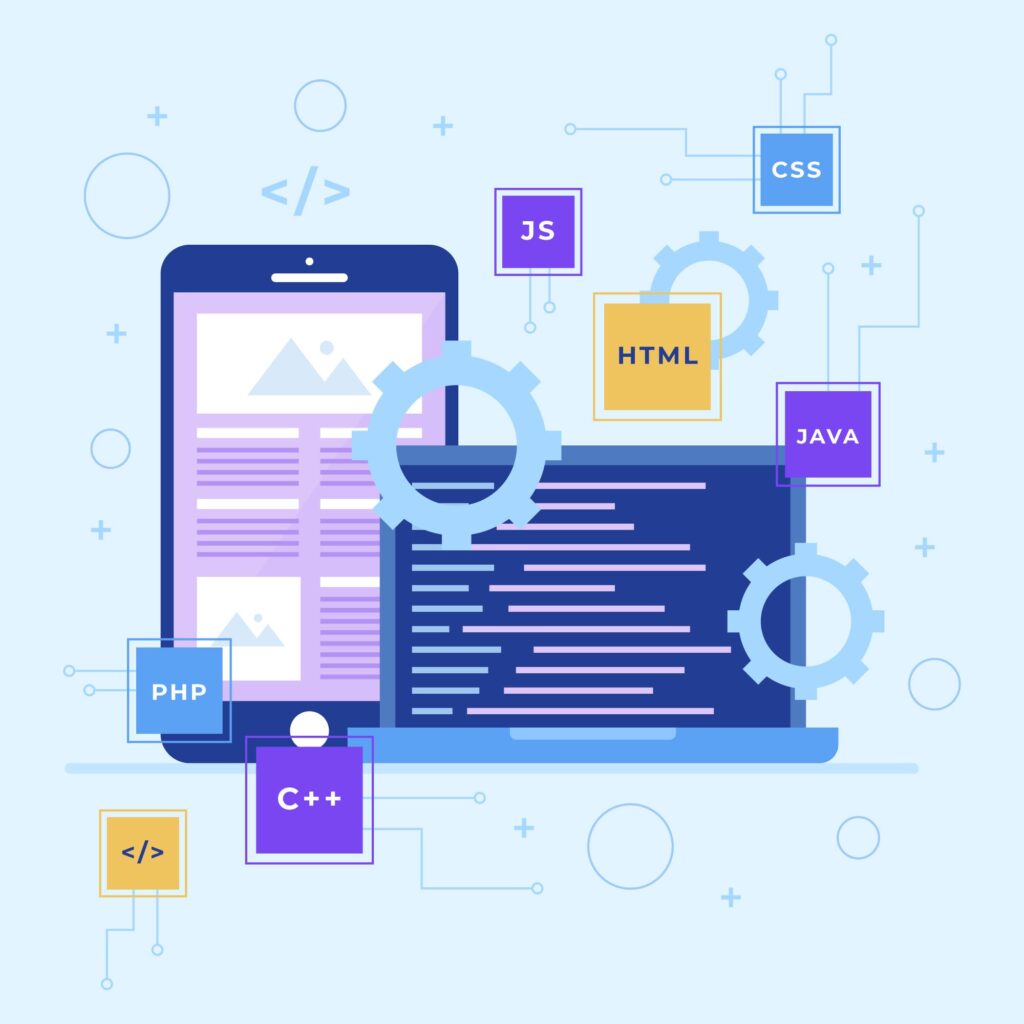
ReactJS, often just called React, is a powerful, open-source JavaScript library used for building user interfaces, specifically for single-page applications. It’s maintained by Facebook along with a community of individual developers and companies. React allows developers to create large web applications that can change data without reloading the page. Its key feature is the ability to build components, which are small, reusable pieces of code that manage their own state. Choosing ReactJS for your web development projects comes with a host of benefits.
Firstly, it enhances the overall speed of the development process thanks to its reusable components.
Secondly, React’s virtual DOM (Document Object Model) is faster than the conventional DOM, making it a better option for high-performance apps.
Moreover, it’s supported by a massive community and Facebook, ensuring reliability and continuity. For businesses, adopting React can be a smart move as it’s widely used by the best website development companies in Bangalore and other tech hubs around the world. This widespread adoption means finding support or hiring talent skilled in React is easier compared to less popular technologies.
Installing React
Before diving into building your shopping cart, you need to have Node.js and npm (node package manager) installed on your computer. If you have these installed, you can install React globally on your machine by running \`npm install -g create-react-app\` in your command line or terminal.With React installed, you can now create a new app. Navigate to the folder where you want your project to be in your terminal, and run \`npx create-react-app shopping-cart\`. This command creates a new React application named “shopping-cart” with all the necessary setup. Once the process is finished, change into your new project’s directory using \`cd shopping-cart\`, and you can start the development server with \`npm start\`.
After creating your application, it’s essential to understand the basic folder structure React generates. Inside your project directory, the main folders you’ll be working with are:
– \`public/\`: Contains the static files like the HTML file, images, and icons.
– \`src/\`: This is where the magic happens. All your JavaScript code, CSS files, components, and tests will be in this folder.
– The \`src/App.js\` file is particularly important as it’s the starting point for your React application, where you’ll define the structure of your shopping cart.
Designing the Shopping Cart Component
Start by creating a new file for your shopping cart component, perhaps naming it ShoppingCart.js. Inside this component, you’ll want to plan for displaying a list of items, the total price of items in the cart, and buttons for adding or removing items. Use the React functional component structure to lay out the basic framework. Remember to import React from ‘react’ at the top of your file. From here, you will build out the structure of your shopping cart, thinking about the props you’ll need to pass to display items dynamically.
Once your ShoppingCart component is structured, give some thought to styling. Styling your shopping cart is crucial for ensuring a good user experience. You may choose to use CSS or a CSS-in-JS solution, like styled-components, depending on your preference. Consider styling the cart items list for easy scanning by users, and don’t forget to make the buttons clearly visible and interactive. A well-designed cart encourages users to proceed to checkout, boosting your site’s conversion rate.
Managing State with React Hooks
React Hooks offer a way to use stateful logic and lifecycle features in functional components. They make it possible to write cleaner, concise code and manage the state in a more predictable way compared to class components.
For our ShoppingCart component, the useState hook is perfect for managing the items in the cart. This hook lets you add state to functional components. Initialize it with an empty array or an initial set of items, depending on your app’s needs. Use this state to render the list of cart items dynamically, updating it as items are added or removed.
To add or remove items from the cart, you’ll need functions that update the state managed by useState. For adding items, create a function that takes a product as an argument and updates the cart items state to include this new product. For removing items, write a function that filters out the item to be removed from the cart items state. Remember, never mutate state directly. Always use the setState function provided by useState to update your state, ensuring your UI stays in sync with your data.
Connecting Components
Passing props in ReactJS is akin to passing notes in class—it’s how components communicate with each other. For example, if you have a ProductList component and a ShoppingCart component, you’ll need to pass the selected items from ProductList to ShoppingCart. This is done via props. Think of props as the arguments you pass into a function. They are read-only and help maintain a unidirectional data flow, making your app more predictable and easier to debug.
Once you’ve passed the selected items as props to the ShoppingCart component, you need to display them. In React, this usually involves mapping over an array of items and rendering each item in the list. Make sure your ShoppingCart component fetches its list of items from its props and use the \`.map()\` function to iterate over the items and display them. Don’t forget to assign a unique \`key\` prop to each item in the list to help React identify which items have changed, are added, or removed.
Adding CSS for a visually appealing cart
CSS plays a critical role in making your shopping cart visually appealing. Start by defining the layout of your cart, such as the placement of product images, descriptions, and the checkout button. Use CSS grids or flexbox for a clean and organized layout. Pick colors and fonts that match your brand’s identity, ensuring that the cart feels like a seamless part of your website. Don’t forget to style buttons and links with hover and active states to make the interface intuitive. With users shopping on various devices, your shopping cart must look great and work flawlessly across all screen sizes. Use media queries in CSS to adjust the layout and font sizes for different devices. Consider the placement of items on smaller screens to ensure that the content is easily accessible and the checkout process is straightforward. Test your shopping cart on multiple devices to identify and fix any usability issues, creating a seamless shopping experience for everyone.
From setting up our development environment to creating product listings and managing state for cart operations, we’ve covered essential steps to get your shopping cart up and running. Building a shopping cart is a fundamental step in creating e-commerce websites. With the basics under your belt, the sky’s the limit. Consider adding more features like payment integration, user authentication, or even using a backend service to manage products and orders.
WordPress Plugins Every Developer Should Use in 2024
As the year 2024 unfolds, the world of website development continues to evolve and flourish. One platform that has stood the test of time and remains a favorite among developers is WordPress. With its user-friendly interface and countless customization options, WordPress has become the go-to choice for both beginners and experienced developers.
One of the reasons WordPress remains at the forefront of website development is its vast array of plugins. These plugins expand the functionality of WordPress, allowing developers to create impressive websites with ease. In this article, we will explore some of the must-have WordPress plugins that every developer should consider using in 2024.
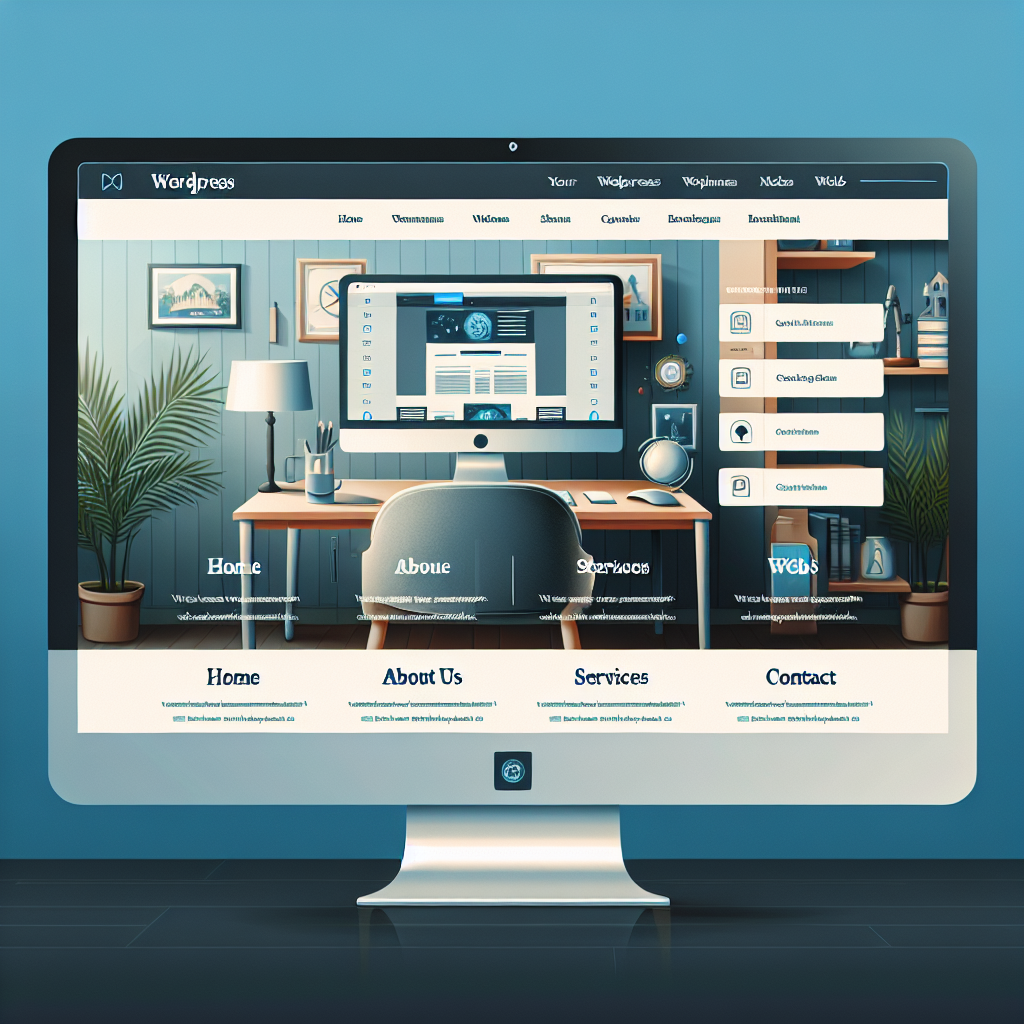
1. Elementor
Elementor has consistently proven to be one of the best drag-and-drop page builders for WordPress. It provides an intuitive interface and a wide range of customization options that enable developers to create visually stunning websites without any coding knowledge. With its extensive template library and responsive design features, Elementor is a powerful tool for building websites in 2024.
2. Yoast SEO
Search Engine Optimization (SEO) plays a crucial role in driving organic traffic to websites. Yoast SEO plugin helps developers optimize their WordPress websites for search engines effortlessly. This plugin provides real-time suggestions for improving the on-page SEO of your content, including meta tags, keyword density, and readability. Yoast SEO is undoubtedly a valuable tool for developers looking to enhance their website’s visibility and attract more visitors.
3. WooCommerce
For developers focusing on eCommerce websites, WooCommerce is an indispensable plugin. It seamlessly integrates with WordPress, transforming it into a feature-rich online store platform. With WooCommerce, developers can easily set up product pages, manage inventory, process payments, and handle shipping options. Its high level of flexibility and customization makes WooCommerce an ideal choice for any online business in 2024.
4. Sucuri
Website security is of paramount importance in today’s digital landscape. Sucuri is a comprehensive security plugin that provides website protection against hacking attempts, malware, and other security threats. With its advanced scanning functionalities and firewall protection, developers can safeguard their WordPress websites and ensure the safety of their users’ data. Choosing Sucuri as your security plugin is undoubtedly a wise decision for developers concerned about website security in 2024 and beyond.
5. WP Rocket
Website speed is a crucial factor that determines user experience and search engine rankings. WP Rocket is a premium caching plugin that accelerates WordPress websites by caching static content and optimizing various performance aspects. By utilizing WP Rocket, developers can significantly improve the loading time of their websites, resulting in a better user experience and higher conversion rates.
In addition to these must-have plugins, developers in 2024 should also consider utilizing the services of the best website development company in Bangalore. The expertise and experience of a professional development team can greatly enhance the quality and functionality of your WordPress website.
Techjet, the best website development company in Bangalore, offers a wide range of services including WordPress website development, custom plugin development, theme customization, and more. Their skilled team of developers understands the latest trends and best practices in website development, ensuring that your WordPress website stands out from the competition.
In conclusion, WordPress plugins are invaluable tools for developers aiming to create impressive websites. Whether it’s designing stunning pages, optimizing for search engines, or enhancing security and performance, these plugins provide the necessary functionalities to streamline the website development process. As we step into 2024, the plugins mentioned are crucial resources that every developer should consider using to create outstanding WordPress websites. Don’t forget to partner with the best website development company in Bangalore, like Techjet, to further elevate your development capabilities.
Effective Strategies to Boost the Conversion Rate of Your Shopify Website
Welcome to the pivotal world of Shopify, where your dreams of running a successful online store can turn into a reality! Whether you’re just starting out or looking to boost your already established online shop, increasing your conversion rate is the secret sauce to driving more sales and skyrocketing your revenue.
Conversion rate, in the world of eCommerce, is essentially the percentage of visitors to your Shopify site who take a desired action. This might mean making a purchase, signing up for a newsletter, or any other goal your site has set. It’s calculated by dividing the number of conversions by the total number of visitors, then multiplying by 100 to get a percentage. Understanding this metric is crucial to measuring the success of your website and strategizing for improvements. Optimizing your conversion rate is taking to fine-tuning a high-performance engine. The better it runs, the further you’ll go. For your Shopify website, this means turning more browsers into buyers, which directly impacts your sales and revenue. By refining the user experience, streamlining the checkout process, and addressing other conversion barriers, you ensure that your site isn’t just attracting traffic — it’s converting it.

Analyzing Your Shopify Website
Conducting a website audit
An effective first step in optimizing your site is conducting a website audit. This process involves a comprehensive review of your website’s performance, design, content, and more. Look for outdated information, broken links, or slow load times — all of which can hamper user experience and, by extension, your conversion rate.
Identifying conversion bottlenecks
After your audit, it’s crucial to pinpoint specific areas where users disengage or drop off. These conversion bottlenecks can be anything from a complicated checkout process to unclear product descriptions. Identifying these barriers gives you clear targets for improvement, making your optimization efforts more effective.
Understanding user behavior through analytics
Utilizing analytics tools can provide valuable insights into how visitors interact with your website. By analyzing data on page views, bounce rates, and conversion paths, you can understand what’s working and what’s not. This understanding allows you to make data-driven decisions to enhance the user journey and, ultimately, increase your Shopify conversion rate.
Optimizing Your Product Pages
When converting browsers into buyers on your Shopify site, the power of an optimized product page cannot be overstated.
High-quality product images
A picture is worth a thousand words, especially in e-commerce. High-quality and multiple-angle images let your customers experience your product as if they were holding it in their hands. Consider including zoom-in functionality and real-life usage scenarios to boost confidence in your offerings.
Compelling product descriptions
While images catch the eye, it’s the product description that seals the deal. Craft descriptions that speak directly to your customers’ needs and desires. Highlight the benefits, not just the features, and don’t shy away from including any unique selling points. A good story can differentiate your products from the competition, making them all the more appealing.
Clear and visible call-to-action buttons
Your call-to-action (CTA) buttons are the gateway to conversions. Make them stand out with contrasting colors and persuasive text that prompts action, such as “Buy Now” or “Add to Cart”. The easier you make it for customers to proceed to purchase, the higher your chances of closing the sale.
Enhancing the Checkout Process
A smooth and hassle-free checkout process is crucial for preventing cart abandonment. Let’s explore how to refine this path to purchase.
Simplify the checkout steps
Streamline the checkout process to the bare essentials. Minimize the number of steps and fields required to complete a purchase. Each additional step can be a reason for potential customers to leave, so keeping it simple is key.
Guest checkout option
Not every shopper wants to go through the process of creating an account. By offering a guest checkout option, you lower the barrier to purchase, catering to those in a hurry or those who prefer not to commit just yet.
Offering multiple payment methods
Give your customers the freedom to pay their way. Including a variety of payment options—from credit cards to PayPal, and even the latest digital wallets—ensures that the checkout process is as inclusive as possible. The more options you provide, the wider the net you cast for capturing sales.
Streamlining Navigation and User Experience
Clear and intuitive website navigation
Creating a clear and intuitive navigation on your Shopify website isn’t just about aesthetics; it’s about guiding your visitors effortlessly towards making a purchase. This means having a simple, well-structured menu that categorizes products in an understandable manner. Consider using breadcrumbs on pages to help users track their navigation and encourage them to explore deeper into your website. Remember, the easier it is for customers to find what they’re looking for, the closer they are to making a purchase.
Mobile optimization
In today’s world, your Shopify site must look and perform impeccably on mobile devices. A significant portion of online shopping is done on smartphones and tablets, so optimizing for these devices is non-negotiable. Ensure your website’s layout adjusts smoothly to different screen sizes, buttons are easy to click, and text is readable without zooming in. Mobile optimization not only improves user experience but also positively impacts your search engine rankings.
Fast loading speed
A slow-loading website is a conversion killer. Most visitors have little patience for a site that takes forever to load, often leaving before they’ve even seen what you have to offer. Optimize images, leverage browser caching, and reduce server response time to ensure your pages load quickly. Fast loading speeds enhance the user experience and can significantly boost your site’s conversion rate.
Implementing Social Proof and Trust Signals
Testimonials and reviews
Integrating customer testimonials and reviews onto your Shopify site can significantly influence the buying decision of potential customers. These insights offer genuine feedback and reassure visitors about the quality of your products. Display them prominently on product pages and even your homepage to build credibility and trust with your audience.
Trust badges and certifications
Placing trust badges and certifications on your site, especially on checkout pages, can alleviate security concerns and make customers feel safer about their transactions. These could include payment gateway badges, SSL certificates, and any other industry-related certifications. They reassure customers that their personal and payment information is secure, encouraging them to complete their purchase.
Showcasing customer success stories
Sharing detailed stories of how your products or services have positively impacted your customers can be incredibly powerful. These stories go beyond simple testimonials by illustrating real-life applications of what you’re selling. They not only serve as proof of your product’s value but also help potential buyers envision how they might use and benefit from your offerings themselves.
Utilizing Personalization and Targeted Marketing
Personalization and targeted marketing are like having a conversation with your customers where you’re speaking directly to their needs and desires. When you tailor your content and offers to match the preferences of your site visitors, you’re essentially guiding them through a customized shopping experience that feels more relevant and engaging.
Tailoring content and offers based on user preferences
Imagine visiting a website that knows your taste so well it feels like it was made just for you. That’s the magic of personalization. By analyzing user behavior, purchase history, and even social media interactions, you can create a shopping experience on your Shopify website that highlights products, deals, and content that align with individual customer preferences. This not only enhances the user experience but significantly increases the likelihood of conversion.
Email marketing strategies
Email marketing remains a powerful tool in the digital marketer’s kit, especially when it’s personalized. Sending out tailored product recommendations, exclusive offers, and even cart abandonment reminders can drastically improve your conversion rates. The trick is to segment your email list based on user behavior and preferences to ensure that your messages are as relevant and enticing as possible.
Retargeting ads
Ever browsed for a product only to see ads for it pop up later on other websites? That’s retargeting in action. By using retargeting ads, you can remind visitors of the products they showed interest in but didn’t purchase, nudging them back to your Shopify website to complete the transaction. This strategy keeps your brand at the top of their mind and significantly boosts conversion opportunities.
Boosting your Shopify conversion rate doesn’t have to be a daunting task. By implementing the strategies you can significantly increase your chance of converting visitors into happy customers. Remember, small tweaks can lead to big changes. Start with one strategy, measure your results, and gradually implement more to see your sales soar.
A Comparative Analysis of Popular Website Development Platforms
Website development platforms in best website development company in bangalore , are foundations used to create, customize, and manage a website. These platforms help both seasoned developers and beginners to design and publish a website. They often come with pre-built templates, editing tools, and even coding environments to cater to different user needs.
Making the right choice of a website platform is absolutely crucial! It can make all the difference in your website’s performance, flexibility, and adaptability over time. The ideal platform facilitates website maintenance, ensures optimal user experience, and supports your long-term business objectives. Whether you’re an e-commerce store, a blog, or a service-based business, the right platform can do wonders for your online footprint.

Overview of the Popular Platforms
Some of the most recognized platforms in the industry are,
– WORDPRESS, renowned for its flexibility and large plugin library.
– WIX, famous for its easy-to-use drag and drop interface.
– SQUARESPACE, popular among creatives for its beautiful templates.
– SHOPIFY, the leading e-commerce platform.
– JOOMLA, a powerful open-source CMS platform.
WordPress
Founded in the year 2003, WordPress initiated as a modest blogging platform, eventually growing into the most extensively used website builder in the world. Well-favored by millions of web developers, both professional and amateur, it’s an open-source content management system (CMS) boasting a hulking share of awesome themes and nifty plugins.
Features and Benefits of Using WordPress
WordPress presents a heap of features for its users. This platform provides access to an extensive range of themes and plugins, designed to enhance website appearance and functionality. WordPress is also known for its simplicity – meaning, you don’t need to be a coding genius to build a website. Here’s a quick rundown of the benefits:
– Versatile uses encompassing e-commerce, blogging, business sites, and portfolios.
– Capable of SEO integration with tools like Yoast SEO.
– Supports multimedia content like images, audio, and video files.
– Provides mobile responsive designs.
Pros and Cons of WordPress
Like any other platform, WordPress comes with its own set of praises and criticisms. Despite the ability to create a website without any technical skills, it can be quite intimidating for first-time users. Also, maintaining WordPress can sometimes be a chore as your website grows and changes.
On the flip side, owing to its bloating community of developers, it’s quite easy to find help online when you run into issues with WordPress. And let’s not forget the level of customization it offers – practically limitless!
Wix
If you’re on the hunt for a user-friendly, intuitive website builder, Wix should definitely be on your radar. As a leading platform in the website development scene, millions of users around the world choose Wix for its simplicity, flexibility, and rich array of features to create their own stunning websites.
Features and Benefits of Using Wix
With Wix, you can enjoy a seamless web development process, thanks to its feature-packed platform.
• Drag-and-drop builder: Design your website’s layout with ease, no coding required.
• Mobile optimization: Ensure your website looks amazing on all devices.
• SEO tools: Boost your site’s visibility on popular search engines.
• Wix App Market: Customize and extend functionality with various apps.
• Free hosting: Your website is hosted for free on Wix’s secure servers.
Pros and Cons of Wix
Wix comes with its own advantages and challenges. On one hand, you have the user-friendly interface, the flexibility of design, and rich set of features. On the downside, you might find Wix’s e-commerce capabilities a bit limiting if you’re running a large-scale online store and some users report slower loading speeds.
Shopify
When it comes to effective E-commerce website builders, Shopify certainly stands tall. Launched in 2006, Shopify operates globally and has become a favorite among businesses of varying scales – from small startups to big-name brands. Offering a range of customizable templates and a user-friendly interface, Shopify provides a smooth sailing experience even for the non-tech savvy folks out there.
Features and Benefits of Using Shopify
Why choose Shopify for building your online store? The answers are plentiful. Here are just a few key highlights:
– User-friendly: Shopify’s platform doesn’t require extensive tech skills to navigate. You can quickly and efficiently set up your store, manage inventory, and track sales all in one place.
– Customization: Shopify offers a robust selection of themes and layouts, all customizable to help your e-commerce store truly reflect your brand.
– App Integrations: A large library of apps helps to enhance the functionality of your store; from SEO tools to social media integration and beyond.
Pros and Cons of Shopify
While Shopify is a strong platform, it isn’t without its drawbacks. It boasts of simplicity and robust features but does fall short with its potential high cost (including transaction fees) and limitations on certain customization elements, especially for stores with complex requirements.
Joomla
Simple, flexible, and power-packed, Joomla is one of the go-to choices for developers across the globe. Since its inception in 2005, Joomla has been empowering developers with an easy-to-use platform rich in features. Renowned for its flexibility, this open-source, user-friendly Content Management System (CMS) has been the backbone of numerous websites spanning different genres.
Features and benefits of using Joomla
Joomla comes loaded with a plethora of features that streamline website development. Some key features include:
– Robust Multilingual Support: Joomla supports 70+ languages making it ideal for websites targeting a global audience.
– Extensive Extensions Library: With 8000+ extensions available, Joomla ensures you have the flexibility to customize your website as per your specific needs.
– User Management: Joomla has effective user management for varying access control levels.
Pros and Cons of Joomla
However, like everything else, Joomla has its pros and cons too. On the upside, Joomla’s extensive community resources like forums and online help are a life-saver for beginners, and its scalability makes it suiting for both small and large-scale projects. However, on the downside, it’s not as beginner-friendly as other CMS platforms, and the quality of its extensions can be inconsistent.
Drupal
Drupal is an open-source content management software (CMS) favored by developers who need a robust, flexible, and customizable platform. Although Drupal’s learning curve is somewhat steeper compared to other platforms, it’s a top choice for building complex, highly customized sites where users need to handle a large amount of data.
Features and benefits of using Drupal
– Drupal offers high-level security which makes it a trusted choice among many government institutions, including The White House and official Australian Government websites.
– Its flexibility is second to none with the possibility to add numerous plugins and modules for virtually any feature you might want to add to your site.
– It excels in managing and organizing complex content.
Pros and Cons of Drupal
While Drupal’s high degree of scalability, robust security, and flexible content organization are significant selling points, it does have its drawbacks. When it comes to its cons, Drupal’s complex nature takes the front row. This complexity, coupled with the need for coding knowledge to exploit its full potential, can make it off-putting for beginners. Moreover, compared to other platforms, it has a smaller array of themes to choose from.
Factors to consider when choosing a platform
Your technical expertise: If you’re a beginner, platforms like Wix may be more suitable. WordPress and Joomla might be more appropriate if you have some technical knowledge.
– Your budget: Each platform has different pricing models. While WordPress and Joomla offer free versions, some premium themes and plugins may involve additional costs. Wix also has a free plan, with premium plans if more advanced features are needed.
– Your needs: If you’re developing an e-commerce site, for example, you may want to opt for a platform that specializes in that area, like Shopify.
In conclusion, selecting the right web development platform depends largely on your unique needs, skills, and budget. If you’re a beginner wanting a simple yet beautiful site, Wix could be your best bet. For more elaborate, customizable sites, WordPress and Joomla are fantastic. Ultimately, you should choose a platform that feels intuitive to use, meets your individual requirements, and fits within your budget.
Evaluating the Best Tools and Platforms for Website Development
In today’s digital age, it’s pretty clear that having an online presence is essential for businesses and individuals alike. A polished, dynamic, and interactive website can undoubtedly say a lot about you or your brand.
A quality website is not an overnight miracle but rather a well-executed plan using the right tools and platforms for web development. It’s like building a house, the better the tools, the sturdier and more spectacular the house. So, choosing the right tools and platforms can be the key difference between a mediocre website and a stellar one! Before diving into the selection of tools and platforms for best website development company in bangalore, the first step is to fully understand the requirements – a process that includes identifying the goals and objectives of your website and analyzing your target audience and their needs.
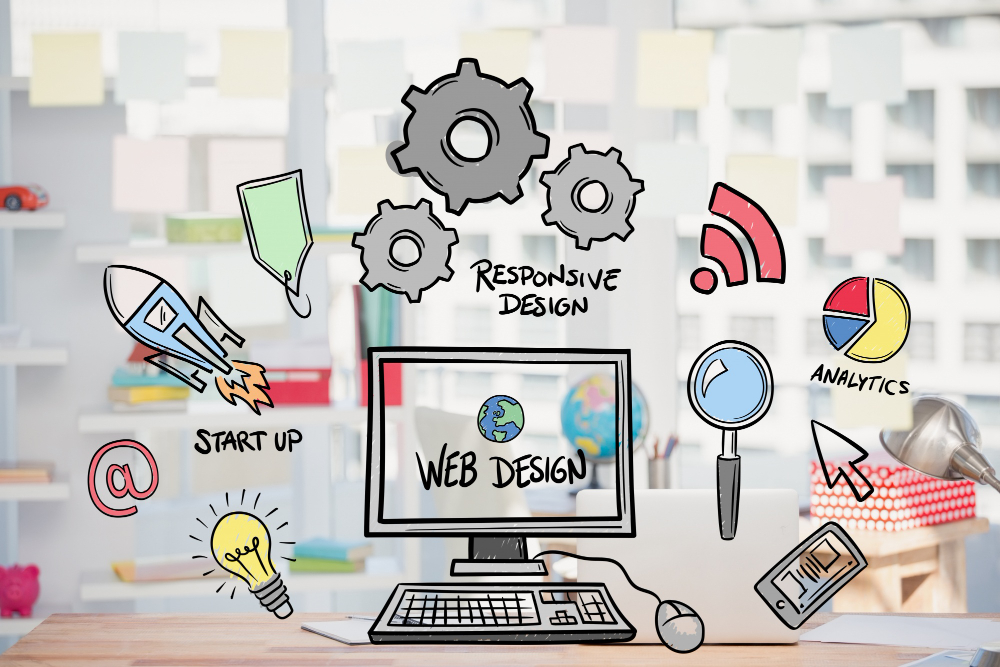
Identifying the goals and objectives of the website
The very basic foundation of a website starts with its purpose. Are you looking to sell products? Maybe you want to provide information, or perhaps you aim to simplify services for your customers? Identifying the fundamental goals and objectives of your website is crucial in ensuring the design and functionality aligns with delivering these outcomes.
* Establishing an online presence
* Boosting sales through eCommerce
* Offering customer support
* Becoming a vital source of information
* Showcasing work or services
Analyzing the target audience and their needs
In tandem with defining website objectives, understanding the target audience is equally important. Are they tech-savvy, millennials, or elderly individuals? The tools and platforms used should cater to user’s comfort and expectations.
* User demographics: age, location, and profession
* The tech knowledge level of users
* Their browsing habits and preferred devices
* The kind of content or functionality they prefer
When it comes to website development, having the right tools and platforms is only half the story. Choosing those that have the most beneficial features for your needs is equally important.
Website Design and Customization Options
A top-notch website development tool should offer a wide variety of design and customization options. This includes everything from having an array of templates and styles to choose from, to rich plug-in ecosystems and analytics tools. Additionally, an exceptional tool will allow you to do more than just build a website – it should enable you to create an experience that’s unique to your brand.
Ease of Use and User-friendly interface
Another vital feature to consider is the tool’s user-friendliness. Regardless of your experience with website development, the platform you choose should be intuitive and easy to navigate. Some helpful traits include streamlined workflows, step-by-step guides, and responsive customer service.
Compatibility with Different Operating Systems and Devices
Lastly, your chosen platform should be compatible with various operating systems and devices. It should function well on Windows, macOS, and even Linux. Furthermore, given the rise of mobile web browsing, a site that looks good and works seamlessly on different screen sizes – from desktops to tablets to smartphones – is a must. In essence, your website should offer a uniform experience, regardless of the user’s device or operating system.
There are several platforms for website development available today, but in this section, we’ll focus on three of the most popular ones: WordPress, Wix, and Squarespace.
Comparison of WordPress, Wix, and Squarespace
WordPress, Wix, and Squarespace have unique qualities that set them apart. WordPress is well-known for its open-source software and customizable features. Users value Wix for its ease of use and intuitive drag-and-drop interface. Squarespace wins points for its sleek, modern templates and a range of built-in functions.
Pros and Cons of Each Tool
Let’s break down the pros and cons:
-WordPress:
Pros: Highly customizable, wide range of plugins and themes.
Cons: Can be complex for beginners, requires regular updates for security.
-Wix:
Pros: User-friendly interface, free version available.
Cons: Limited customizability, less control over SEO settings.
-Squarespace:
Pros: Beautiful built-in templates, integrated eCommerce features.
Cons: Less user-friendly than Wix, fewer customization options than WordPress.
In creating a website, your primary focus should be universal accessibility. We aim for this by ensuring a responsive design and cross-browser compatibility. Some exceptional tools that help include Bootstrap, Foundation, and Adobe Dreamweaver. These tools exclusively cater to responsive design, offering mobile-friendly features to enhance your user’s experience. For cross-browser compatibility, you might consider tools like BrowserStack and CrossBrowserTesting which help ensure your website’s functionality across various browsers.
Finding the right tools for website development can be a make-or-break factor. It can drastically reduce the development time, improve the website’s functionality, user experience, and overall performance. Every tool and platform discussed in this blog has its perks; it’s about understanding your unique needs and specifications, and choosing the best fit for them.
Deployment of the chosen tools is not the end of the story. You need an ongoing commitment to optimization.
1. Always Keep Learning: Web development is a dynamic field, and your chosen platform constantly updates its features. Stay up-to-date with their latest enhancements.
2. Performance Metrics: Regularly track and analyze your site’s performance. If you see an aspect not performing adequately, it’s time to re-evaluate the tool.
3. Regular Updates: Keep your platforms and tools updated to the latest versions, ensuring optimal performance and security.
Optimizing Websites For Voice Search And How It Impacts The Overall SEO Strategy.

One thing i noticed when i was going through one post on social media that is how frequently we are using VOICE SEARCH in GOOGLE nowadays , so after a 2-3 days of collecting information , research and taking references i am writing this article as a digital marketer :- optimizing websites for voice search reshapes SEO.
Voice search optimization targets common spoken questions within your content to boost its chances of surfacing in verbal queries. This approach requires fine-tuning both the substance and structure of information provided on web pages.
The aim is clear: when someone asks their device a question, your site should be the top pick from virtual assistants like Alexa or Siri. Thus, integrating this strategy into traditional SEO practices in best website development company in bangalore proves essential for staying ahead , as technology evolves daily with new ways users seek out information online.
Understanding Voice Search SEO
Voice search optimization tweaks online content to pop up in spoken queries. Think about it—people ask their smart gadgets questions all the time now, looking for quick answers. They’ll say, “Hey Siri,” or trigger their device and fire off a question like where to eat or when an event’s happening.
This SEO trick aims for that top response spot because folks are using voice assistants more every day, not just on phones but through tons of those home speakers too—and there’s going to be over 200 million around soon! So picture this: you get your site ready for voice searches; suddenly it stands out even more on regular search pages since engines love seeing sites play nice with voice requests. Here’s why it matters: Voice searches sound way different than typed ones—they’re how we chat normally.
We don’t talk like robots (well, most of us), so tweaking websites means making them chatty-friendly too.
Voice Optimization Strategies for Web Design
Designing web pages for voice search requires a keen understanding of NLP, or how machines interpret human speech. Users speak to devices like they do to people, using full sentences and questions. So websites must now cater to these spoken phrases rather than just simple keywords.
Consider someone asking their phone for help while cooking dinner. They might say, “What’s an easy veggie recipe?” This presents an opportunity. Create content that answers this inquiry with concise, clear information.
With every smart device equipped with voice functionality — from phones in our pockets to speakers in homes — having a site optimized for vocal queries isn’t optional; it’s vital. Plus, given that search engines are getting better at catching the meaning behind follow-up inquiries such as “And what if I need gluten-free options?”, ensuring coherent context throughout your digital presence ups user interaction significantly.
Gone are days when rigid command-style searches ruled – today’s SEO savviness means embracing the fluidity of natural conversation within website design strategies in best website development company in bangalore .
Integrating Long-Tail Keywords for Queries
When a site focuses on long-tail keywords, it taps into specific searches with clear intent. Fewer people search for these phrases each month; they’re niche terms. That’s why we call them “long tail.” They know what they want and are probably ready to buy.Most clicks won’t chase these niche terms, so there’s less fight to top the charts here. Plus, when you nail those exact words users type in their search bars, bingo! You meet them right where their interest peaks—that means better chances of turning looks into buys.
In fact, Backlinko threw light on this: out of heaps of keyword checks (over 300 million!), about 92% were such unique ones barely searched each month—long-tail style. So if hands aren’t raising high for them usually doesn’t mean no one is searching—it just spells opportunity knocking at your door! Understand need through these keys—craft content aimed straight at questions asked—and watch as targeted traffic finds its way home to what you’ve got up sleeve.
Improve Local SEO with Voice Search
Voice search changes the way people find local businesses. Users talk to devices like they’re having a chat with friends. They ask where to eat, shop, or get help. For local SEO success, websites must adapt or fall behind. Business owners use natural spoken language for their site content now. People seek clear answers when asking Siri or Alexa for advice on nearby services and products.Local shops must shape online info into easy-to-ask questions. To rank well in voice searches, start by including these question terms: “who,” “why,” “where,” “what,” and “how.” These words match how customers speak and inquire naturally through smart assistants. Next up are long-tail keywords—key phrases that mirror everyday speech rather than just simple tags; because this is precisely how most folks converse with AI helpers at home or on phones today.
One can spot popular queries using Google’s related search suggestions at the bottom of pages which reveal what others commonly look for. E-commerce sites take advantage of such insights by weaving those specific longer phrases throughout their offerings—a method paving the way to top responses from digital aides steering customer choices every day across towns everywhere.
Enhancing Mobile-Friendly Site Features
Mobile-friendly sites are now the norm, not an extra. People look for quick answers on-the-go, which means your site must be ready to show up in voice search results on mobile devices. Enhancing features starts with responsive design – making sure content adapts seamlessly across all gadgets like phones and tablets.This eliminates frustrating scrolling or zooming that can drive visitors away. Every detail counts: big tap targets stop mis-clicks; easy forms boost interactions by using autofill or simple dropdown menus. Don’t forget fonts need to stay readable even when screens shrink down small.
Speed is also non-negotiable; a slow site might as well be invisible. Compress images and use caching so users don’t wait around—site speed affects SEO ranking too. Remember, consistency matters everywhere online — keep NAP info precise across directories because this helps people find you easily through local searches including those done via speech-based queries.
Ultimately, tuning your website’s mobile version isn’t just about pleasing algorithms but providing real value to human users searching locally on their smartphones.
Focus on Conversational Language Usage
Optimizing for voice search means crafting content that reflects real conversations. Picture someone asking their phone about the best pizza places near them – they’ll speak like they’re talking to a friend, not typing keywords into a search engine. So websites must use natural language people actually say out loud.Voice searches are typically full of specifics; users ask complete questions instead of searching short phrases. They might ask, “Where’s the closest open coffee shop?” That detail is critical because it lets sites target long-tail queries, which tend to have clear intent and context. Smart tech is getting smarter at recognizing spoken words.
Sites must provide conversational replies that sound human and make sense on their own, as voice searches often return a single result from featured snippets. Marketers face new hurdles here: adapting strategies beyond simple keyword matching towards understanding how normal speech works in queries can be tough but necessary for success in our increasingly talk-first web world.
Update Content to Answer Questions Effectively
To ensure content answers questions effectively, it must be clear and easily found. One way to achieve this is by utilizing FAQ sections with direct responses that voice search devices can read aloud. Research shows users ask full-sentence queries in conversational language; hence, mirroring this structure helps search engines recognize relevance.
Another key element involves structuring data for clarity, using headers intelligibly so algorithms parse the text smoothly—this aids both traditional web searches and spoken inquiries alike. Content should convey trustworthiness through expert quotations or accredited sources; Google prioritizes expertise, authority, and trust (E-A-T) within its ranking system. Moreover, incorporating a logical flow from one topic to another guides readers without confusion—vital as disjointed information hampers comprehension across all platforms including voice-activated systems which demand succinctness due to their nature of providing quick replies.
Finally yet importantly are regular updates: keeping facts accurate fosters reliability while adapting answer formats might cater better tot he constantly evolving patterns of how people seek information online today.
Technical Enhancements for Faster Page Loads
Sites that load slow frustrate users, especially those using voice search. These devices favor fast-loading pages to answer queries quickly. High speed is key for a site’s success in voice SEO; it keeps visitors happy and ranks sites better on search engines.To stay ahead, webmasters should ensure their content uses natural language fitting the speech patterns of people asking questions vocally. Adding headings makes information clear for easy picking by virtual assistants. Local searches such as “what’s near me” are big with voice inquiries too—details like location and contacts must be accurate online.
For global reach, offer your page in several languages tailored to different regions’ needs. Voice seekers often use mobiles making quick loading vital there too. Reading customer trends tells you what they want from voice lookups; surveys add more layers to this knowledge while reviews point out issues for improvement—all towards crafting seamless experiences when folks talk to their tech.
Schema Markup Adoption by Best Website Development Company In Bangalore.
Development companies are quickly recognizing the value of schema markup. This tool helps Google grasp a site’s content, which isn’t as clear to machines as it’s to people. With over 800 definitions in Schema.org’s system, every term comes with many properties for precise description.
Various industries like auto or health benefit from tailored extensions. It’s no wonder that platforms beyond Google—like Bing and Pinterest—are leveraging structured data too; after all, Schema.org sets the standard web-wide. In recent times we’ve seen rapid growth in this area—a testament to its rising importance among SEO trends highlighted by experts at Search Engine Journal.
Adaptation means not only does your content make more sense across different devices but also improves visibility on local searches suggested by Bright Local insights. Companies can stay ahead if they take action now: adopt schema from resources available online and start speaking machine language fluently with formats such as JSON-LD preferred for their ease and functionality. Optimizing for voice search reshapes SEO strategy significantly. Websites must adopt conversational keywords and answer queries succinctly to rank well. Focus on natural language processing advances, ensuring content reflects how people actually talk.

